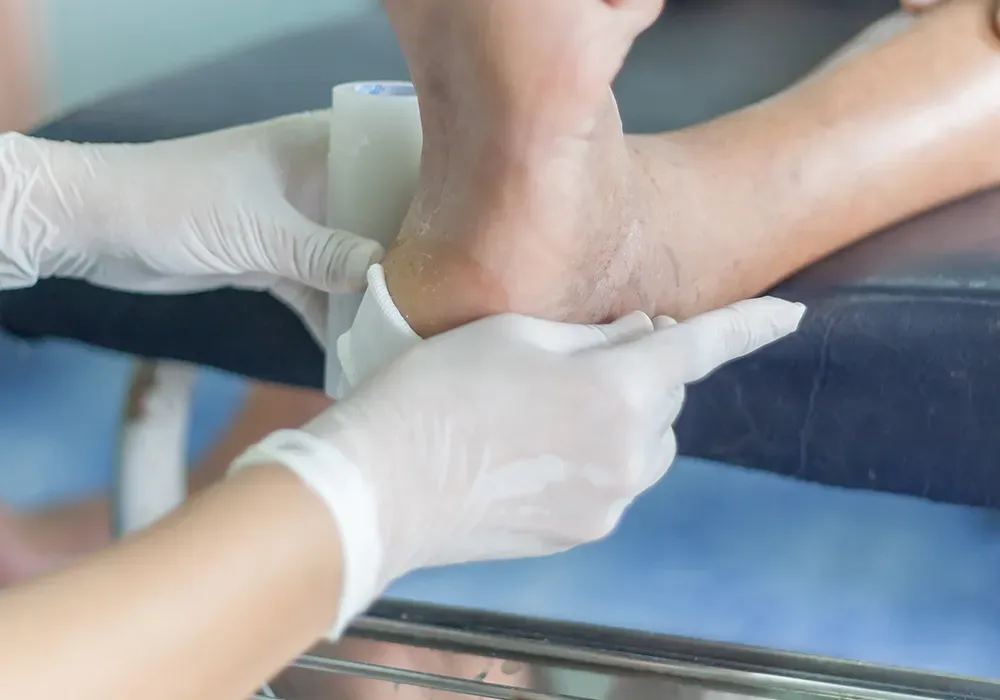A key component of diabetic care is maintaining foot health. Diabetics are often at a higher risk for complications that frequently begin in the feet. Regular podiatry check-ups are fundamental in preventing and managing potential issues, reducing the likelihood of serious complications. Let’s look at the various benefits of podiatry check-ups and their role in diabetic foot care.
Detecting Foot Problems Early
One key reason diabetic patients prioritize podiatry appointments is the early detection of foot issues. Diabetes often leads to reduced blood flow and nerve function in the feet, making patients susceptible to conditions like neuropathy, calluses, ulcers, or infections. Identifying these problems early allows for timely intervention, preventing them from escalating into severe complications such as infections or amputations.
Podiatrists are trained to identify subtle signs of issues that may not be apparent to patients. For instance, they can detect small cuts or pressure points that could become ulcers if left untreated. Thus, Regular assessments act as a preventative strategy to manage risks before they become long-term health issues.
Recommending Appropriate Footwear
Footwear plays a central role in the well-being of individuals with diabetes. Poorly fitted or inadequate shoes can create pressure points, exacerbate calluses, or cause injuries that may lead to severe complications. Podiatrists assess the unique needs of a patient’s feet and recommend appropriate footwear or orthotics to reduce stress on sensitive areas.
For instance, a podiatrist might recommend custom-molded orthotics to redistribute pressure evenly or diabetic-friendly shoes featuring a wider toe box and extra cushioning. Such measures reduce irritation, enhance comfort, and keep feet healthy. Patients who consistently follow these recommendations may experience fewer foot-related issues as part of their diabetes management.
Educating Patients on Foot Hygiene
A significant part of podiatry for diabetic patients involves educating them on proper foot care and hygiene routines. Diabetic individuals are encouraged to conduct daily foot inspections to spot minor concerns, such as blisters or discoloration, before they worsen. Podiatrists provide guidance on helpful practices, such as proper nail trimming techniques, moisturizing dry skin, and keeping feet clean and dry to minimize bacterial growth. They also emphasize the need to avoid harsh chemicals or unsterile tools that can harm sensitive skin. This emphasis on education empowers patients to protect their feet and actively reduce the likelihood of complications.
Preventing Serious Complications
Diabetic patients face an increased risk of severe foot problems, including ulcers, infections, and amputations. Frequent podiatry check-ups are instrumental in significantly lowering this risk. By addressing minor issues early and providing tailored treatment plans, podiatrists contribute to long-term foot health and overall well-being.
For instance, podiatrists often use advanced techniques and tools, such as debridement of calluses or therapeutic footwear prescriptions, to improve foot circulation and prevent infection. These interventions can make a substantial difference in preventing chronic wounds and promoting independence and mobility for patients over time.
Book Your Podiatry Appointment Today
Regular podiatry visits are an indispensable component of diabetic care. They provide benefits such as early detection, personalized footwear recommendations, education on hygiene, and a lower risk of severe complications. By integrating podiatry into their health routines, diabetic patients can maintain optimal foot health. Schedule a podiatry appointment with a qualified specialist for professional guidance.





Leave a Reply